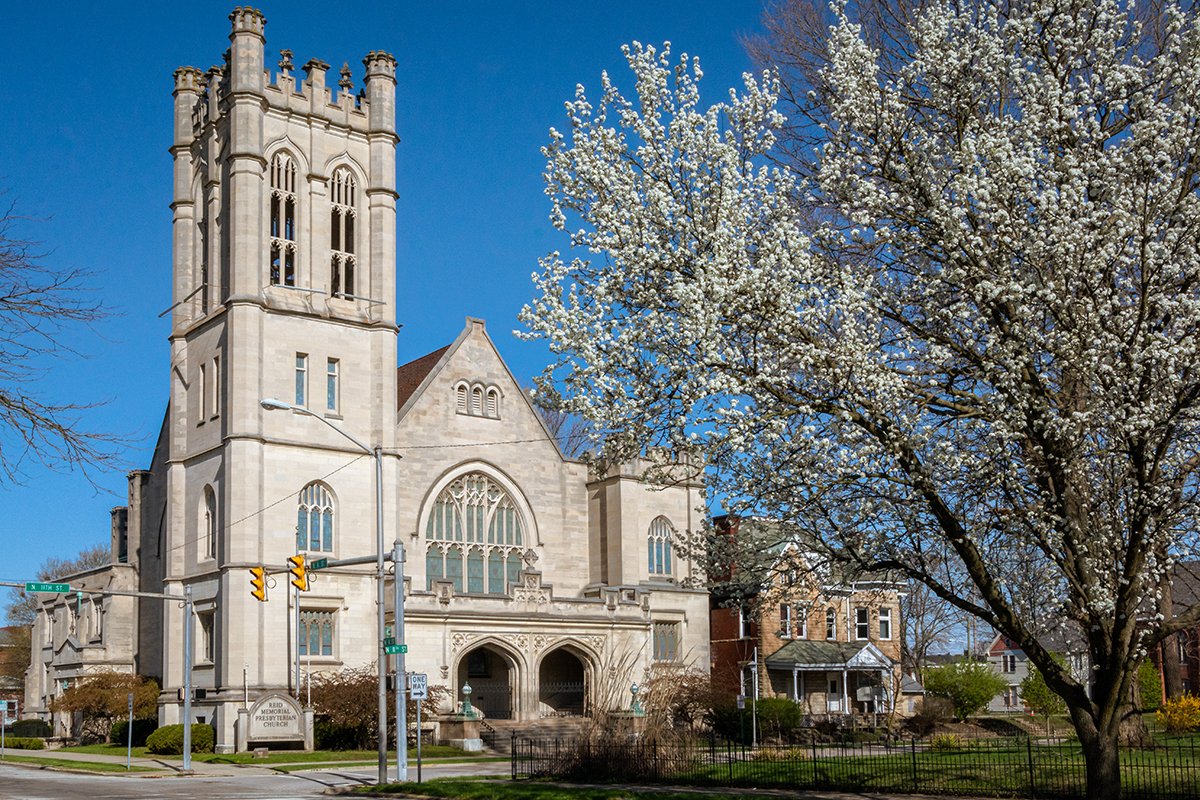About Us
The Reid Center was created to preserve the historic Reid Memorial Presbyterian Church and is committed to diversity, equity, access, and inclusion in our leadership and in all programming.
With your support, we envision The Reid Center becoming a cultural performance venue of choice, serving as both an educational and historical destination for visitors and a source of community pride and engagement through the ongoing preservation of this magnificent structure and its rich history.
Donor support is vital to ensuring The Reid Center’s sustainability, both in its preservation as a national historic landmark and its mission to serve as a cultural performance venue and community center. Donations accepted at the front and back of the Sanctuary. Donations / gifts may also be sent to the “The Reid Center”, P.O. Box 2543, Richmond, IN. 47375
SPECIAL THANKS
Special thanks to The Reid Center Advisory Group & its amazing volunteers, the Whitewater Presbytery, Wayne County Foundation, and Indiana Landmarks Foundation for their assistance and support.
The History
The Reid Memorial Presbyterian Church was commissioned in 1904 by Daniel G. Reid. Reid was a financier, industrialist and benefactor known and the “Tinplate King”. He constructed this building in memory of his parents, Daniel Reid and Anna Gray Reid. Its bell tower and Tiffany windows were an immediate and impressive testament to Reid’s generosity.
Born and raised in Richmond, Reid rose from messenger boy to bank president, and made a fortune in the early tinplate industry, ultimately becoming a New York City financier, though never forgetting his hometown.
In addition to commissioning the construction of Reid Memorial Presbyterian Church, he also gave funds to build Reid Memorial Hospital , both of which still carry the family name.
He also lavished funds on other Richmond institutions, including the YMCA, the Richmond Art Association and Earlham College.
The Building
The Reid Memorial Presbyterian Church is an architecturally significant building. Designed by the Cleveland, Ohio architectural partnership of Sidney Badgley and William H. Nicklas, the building was dedicated on May 13, 1906. It’s estimated he spent about $295,000, which would be the equivalent of more than $7.5 million today. Significant features include:
● 62 Tiffany stained-glass windows with over 175 individual panels
● 14 Bronze Bells of Carillon, with the largest weighing over a ton
● Gothic architecture with a limestone exterior
● A 1905 Starr concert grand piano, known to be the only one in existence
● A 1906 pipe organ built by the famed Hook & Hastings House of Boston
The Windows
Most of the church’s interior and all of its stained glass windows were designed by Louis Comfort Tiffany and the Tiffany Studios of New York. The church’s interior is even more arresting, with a dramatic fan-vaulted ceiling, carved wooden trim, along with its stunning array of Tiffany stained glass windows, all constructed of Favrile glass. Reid is thought to be the only one of ten churches in the country which have all Tiffany windows. The windows cost between $2,000 and $3,000 each at the time of installation in 1905-1906.
Photos for the website were provided by Jane Holman and Madeleine Demetriades.
Our Mission
The Reid Memorial Presbyterian Church and Community Center, Inc. (d.b.a. The Reid Center) acquired this property in 2022.
Our Mission is:
To protect and preserve the Reid church building, including the stained glass windows, fixtures, and pipe organ for historical and cultural purposes as part of Richmond’s historical heritage
To make the building available to tours and programs open to private and public groups for appreciation of the historical, religious, and cultural significance of The Reid Center’s property.
To serve as a center for community activities in the Richmond and surrounding area, including providing space for non-profit and religious organizations
To maintain the sanctuary as a space for Presbyterian and ecumenical worship, musical events featuring liturgical and other music, recitals and music education.
To provide space for educational activities, including but not limited to religious education, musical instruction and other topics.
To provide support and space for visual and performing arts.
Our Vision
Our Vision is:
Serve diverse community groups
Preserve the historic and architectural significance of the building as a resource for both local and national groups.
Provide its space and musical resources for multiple performances.
Act as a community center, offering space and opportunities for other non-profit organizations to use as offices, classrooms and events.
Board of Directors
-

Alan Thames
-

Ann Fennimore
-

Ray Ontko
-

Richard Smith
-

Mary Walker
-

Sue King
-

Marsh Davis




